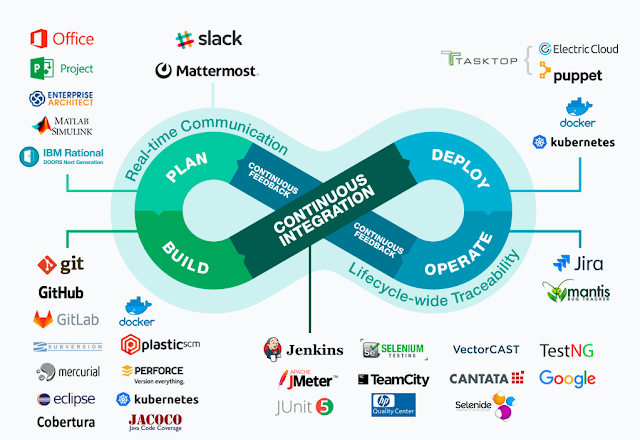Ansible Basics
Ansible Basics
Connections:
# Sample Inventory File
web1 ansible_host=server1.company.com ansible_connection=ssh ansible_user=root ansible_ssh_pass=Password123!
web2 ansible_host=server2.company.com ansible_connection=ssh ansible_user=root ansible_ssh_pass=Password123!
web3 ansible_host=server3.company.com ansible_connection=ssh ansible_user=root ansible_ssh_pass=Password123!
db1 ansible_host=server4.company.com ansible_connection=winrm ansible_user=administrator ansible_password=Password123!
Whereas,
- web1 & db1 denotes alias name for your server.
- ansible_host denotes your Server host IP / Name.
- ansible_connection denotes the type of your connection (for Linux: ssh & for windows: winrm)
- ansible_user denotes the user name of your server
- ansible_ssh_pass, ansible_ssh_key (for Linux) / ansible_password (for windows)
Create Groups:
# Sample Inventory File
# Web Servers
web1 ansible_host=server1.company.com ansible_connection=ssh ansible_user=root ansible_ssh_pass=Password123!
web2 ansible_host=server2.company.com ansible_connection=ssh ansible_user=root ansible_ssh_pass=Password123!
web3 ansible_host=server3.company.com ansible_connection=ssh ansible_user=root ansible_ssh_pass=Password123!
# Database Servers
b1 ansible_host=server4.company.com ansible_connection=winrm ansible_user=administrator ansible_password=Password123!
[web_servers]
web1
web2
web3
[db_servers]
db1
Whereas,
- [Group name] denotes the name of the group
- Sub-items denote Group items
Parent Group:
[parent_group:children]
child_group1
child_group2
Whereas,
- parent_group denotes the name of your parent group
- child_group1 indicates the name of the groups you want to merge
For Eg:
sql_db1 ansible_host=sql01.xyz.com ansible_connection=ssh ansible_user=root ansible_ssh_pass=Lin$Pass
sql_db2 ansible_host=sql02.xyz.com ansible_connection=ssh ansible_user=root ansible_ssh_pass=Lin$Pass
web_node1 ansible_host=web01.xyz.com ansible_connection=winrm ansible_user=administrator ansible_password=Win$Pass
web_node2 ansible_host=web02.xyz.com ansible_connection=winrm ansible_user=administrator ansible_password=Win$Pass
web_node3 ansible_host=web03.xyz.com ansible_connection=winrm ansible_user=administrator ansible_password=Win$Pass
[db_nodes]
sql_db1
sql_db2
[web_nodes]
web_node1
web_node2
web_node3
[boston_nodes]
sql_db1
web_node1
[dallas_nodes]
sql_db2
web_node2
web_node3
[us_nodes:children]
boston_nodes
dallas_nodes
Q: Update the playbook with a play to Execute a script on all web server nodes. The script is located at /tmp/install_script.sh
Ans: Playbook.yml are written in YAML Language as follows:
-
name: 'Execute a script on all web server nodes'
hosts: web_nodes
tasks:
-
name: 'Execute a script on all web server nodes'
script: /tmp/install_script.sh
-
name: 'start httpd services'
service: 'name=httpd state=started'
Most used Ansible Modules:
1. Package management
-
name: how to install any package
dnf / apt / yum:
name: <packagename>
state: latest
2. Service
-
name: Start service foo, based on running process /usr/bin/foo
service:
name: foo
pattern: /usr/bin/foo
state: started
3. Copy
-
name: Copy file with owner and permission, using symbolic representation
copy:
src: /srv/myfiles/foo.conf
dest: /etc/foo.conf
owner: foo
group: foo
mode: u=rw,g=r,o=r
4. Debug
-
name: Write some content in a file /tmp/foo.txt
copy:
dest: /tmp/foo.txt
content: |
Good Morning!
Awesome sunshine today.
register: display_file_content
-
name: Debug display_file_content
debug:
var: display_file_content
verbosity: 2
5. File
-
name: Create a directory if it does not exist
file:
path: /etc/some_directory
state: directory
mode: '0755'
-
name: Add a line to a file if the file does not exist, without passing regexp
lineinfile:
path: /etc/resolv.conf
line: 192.168.1.99 foo.lab.net foo
create: yes
-
git:
repo: https://github.com/ansible/ansible-examples.git
dest: /src/ansible-examples
separate_git_dir: /src/ansible-examples.git - name: configurable backup path
cli_config:
config: "{{ lookup('template', 'basic/config.j2') }}"
backup: yes
backup_options:
filename: backup.cfg
dir_path: /home/user - name: Create a bz2 archive of multiple files, rooted at /path
archive:
path:
- /path/to/foo
- /path/wong/foo
dest: /path/file.tar.bz2
format: bz2 - name: Change the working directory to somedir/ and run the command as db_owner if /path/to/database does not exist.
command: /usr/bin/make_database.sh db_user db_name
become: yes
become_user: db_owner
args:
chdir: somedir/
creates: /path/to/databaseAnsible Core Components
- Inventories
- Modules
- Variables
- Facts
- Plays
- Playbooks
- Configuration Files
Basic Commands:
# ansible <group> -m <module> -a <arguments>
- Check Ansible Version
- ansible --version
- Dry Run
- ansibal-palybook playbook.yml --check
- Managing services
- Starting a service
- # ansible <group> -m service -a “name=httpd state=started”
- Stopping a service
- # ansible <group> -m service -a “name=httpd state=stopped”
- Restarting a service
- # ansible <group> -m service -a “name=httpd state=restarted”
- Managing Packages
- Check if the package is installed & update it
- # ansible <group> -m yum -a “name=httpd state=latest”
- Check if the package is installed & don’t update it
- # ansible <group> -m yum -a “name= httpd state=present”
- Check if the package is at a specific version
- # ansible <group> -m yum -a “name= httpd-1.8 state=present”
- Check if the package is not installed
- # ansible <group> -m yum -a “name= httpd state=absent”
- Check the connectivity of hosts
- # ansible <group> -m ping
- Rebooting hosts
- # ansible <group> -a “/sbin/reboot”
- Checking the host’s system information
- # ansible <group> -m setup | less
- # ansible <group> -m setup -a “filter=ansible_distribution”
- Transferring files
- # ansible <group> -m copy -a “src=/home/ansible dest=/tmp/home”
- Managing users
- Creating a new user
- # ansible <group> -m user -a “name=ansible password=<encrypted password>”
- Deleting a user
- # ansible <group> -m user -a “name=ansible state=absent”
- Changing permissions & ownership
- Changing permission for a file
- # ansible <group> -m file -a “dest=/home/ansible/file1.txt mode=777”
- Changing the ownership of a file
- # ansible <group> -m file -a “dest=/home/ansible/file1.txt mode=777 owner=ansible group=ansible”
- Tag Formatting
- ansibal-palybook playbook.yml --tags “install”
- ansibal-palybook playbook.yml --skip-tags “install”
Thanks & Regards,
Tapan Patni
Email: tapanpatni58@gmail.com
Tapan Patni
Email: tapanpatni58@gmail.com
Youtube: https://www.youtube.com/c/TapanPatni
Linkedin: https://www.linkedin.com/in/tapan-patni
BlogSpot: https://tapanpatni58.blogspot.com
Linkedin: https://www.linkedin.com/in/tapan-patni
BlogSpot: https://tapanpatni58.blogspot.com





Comments
Post a Comment